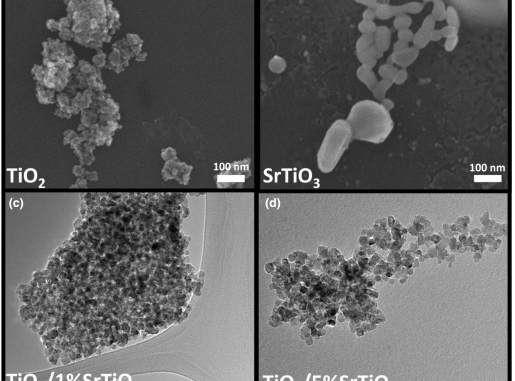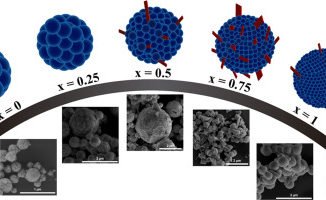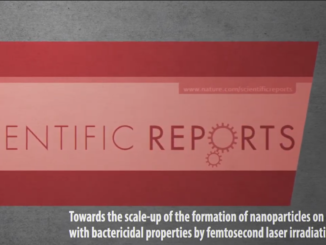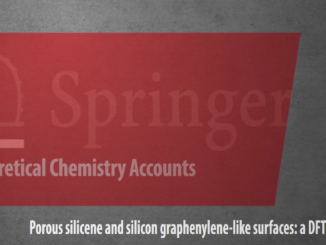
An approach for photodegradation mechanism at TiO2/SrTiO3 interface
Abstract: TiO2/SrTiO3 heterojunction powders were obtained and characterized, and their photocatalytic potential was evaluated. The formation of the solid–solid interface was evidenced by secondary-phase formation in the interface region, which was observed using transmission electron microscopy. The photocatalytic efficiency of the TiO2/SrTiO3 heterojunction was higher than that of pure TiO2 and SrTiO3 samples. The photocatalytic behavior was investigated via scavenger experiments, which indicated that the mechanism of charge transfer for the heterojunction was the direct transfer of the electrons at the interface. A surface compositional analysis of the materials revealed that effective electronic-transfer properties of the materials are more important than the content of pre-adsorbed species on the surface for redox reactions. Photoluminescence spectroscopy analyses showed a reduction in the photoluminescent intensity for the heterojunction and emission in distinct regions depending on the defects formed in the heterojunction. These differences in behavior may be related to the different photocatalytic responses observed for pure compounds and heterojunctions; a broad analysis indicates that the mono ( V⋅O ) and double ( V⋅⋅O ) ionized vacancies affect the performance of the photocatalyst in the degradation of micropollutants.
Author(s): Coleto, U.; Amoresi, R. A. C.; Teodoro, V.; et al.
Journal of Materials Science-Materials in Electronics
Volume: 29 Issue: 23 Pages: 20329-20338 Published: 2018
DOI: http://www.doi.org/10.1007/s10854-018-0167-x
PDF: An approach for photodegradation mechanism at TiO2-SrTiO3 interface




